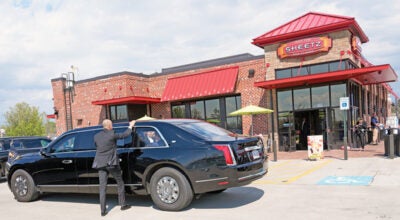Many bridges in Ohio are run-down, need repairs
Published 10:27 am Monday, September 16, 2013
TOLEDO (AP) — Three majestic bridges that soar over the Cuyahoga River and connect downtown Cleveland with the city’s west side opened to traffic before the nation entered World War II and are more than showing their age.
The newest one — the Main Avenue Bridge, completed in 1939 — was shut down to truck traffic last year so that weakened steel plates could be replaced.
All three are among hundreds of bridges in Ohio that are both structurally deficient and fracture critical, a combination experts say is problematic. While a few of those bridges are on busy commuter routes, most are on secondary roads that cross creeks and rivers in rural parts of the state.
Following the collapse in May of the Interstate 5 bridge in Washington state, The Associated Press analyzed data involving 607,380 bridges in the National Bridge Inventory that are subject to National Bridge Inspection Standards. On a national basis, some 7,795 bridges nationwide are structurally deficient and fracture critical bridges, according to the most recently available federal government data.
A bridge is deemed “fracture critical” when it does not have redundant protections and is at risk of collapse if a single, vital component fails. A bridge is “structurally deficient” when it is in need of rehabilitation or replacement because at least one major component of the span has advanced deterioration or other problems that lead inspectors to deem its condition “poor” or worse.
In Ohio, the National Bridge Inventory lists 421 bridges that fall into both categories.
The Ohio Department of Transportation, which has the most recent records, says dozens of those bridges have been replaced, closed or repaired recently while other bridges have been added to the list, leaving 384 that are both “structurally deficient” and “fracture critical.”
Fourteen of those are maintained by the Transportation Department, while nearly all of the rest are county-owned.
Just because the bridges have those red flags doesn’t mean that are not safe, said Steve Faulkner, a spokesman with the Transportation Department.
“If a bridge is unsafe, it’s not going to be kept open,” he said.
All but one of the state bridges are either scheduled to be repaired or replaced or are in the midst of construction, while the other one is under review, Faulkner said. Once the work is finished, they will no longer be structurally deficient, he said.
They include two bridges on Interstate 90 — one in Cleveland and the other in Ashtabula County — along with the Anthony Wayne Bridge in Toledo, the state’s only remaining suspension bridge, the Ironton Russell Bridge in Lawrence County, and the Hope Memorial and the Detroit-Superior bridges in Cleveland.
The Transportation Department has spent $7.4 billion on bridge preservation and maintenance over the past decade.
Maintaining all but a handful of the remaining bridges falls under the responsibility of the counties where they’re located.
“The funding has not kept up with the demand or the need out there,” said Fred Pausch, executive director of the state county engineers association. “If you don’t keep up with maintenance, it’s really easy to get behind.”
But Pausch said county engineers are well aware of bridges that are in dire need of repair. “If the situation gets bad enough, they’ll close the bridge,” he said. “Our No. 1 job is safety.”
Ohio has about 44,000 bridges of 10 feet or longer, second most in the nation behind Texas, according to the Ohio Department of Transportation. Of those, nearly 2,500 county bridges need to be replaced soon, according to the engineers association.
It estimates that counties need an extra $700 million to take care of the backlog. But counties have been hit by cuts in state funding and are seeing less money from gas tax revenues, said Allen County Engineer Tim Piper.
“Bad roads, closed bridges and bridges posted with weight limits in our communities are causing detours to farmers, school buses and commercial vehicles servicing our industries,” Piper told state lawmakers this past spring.




